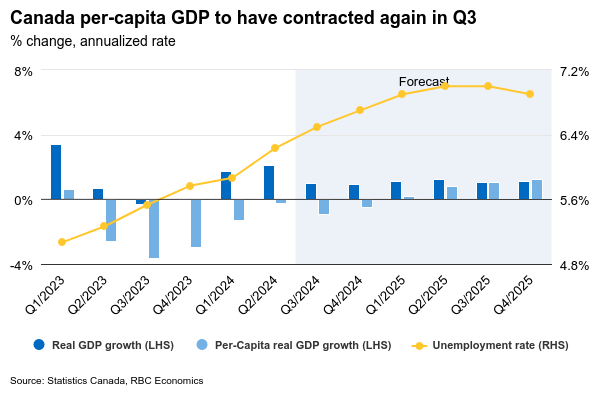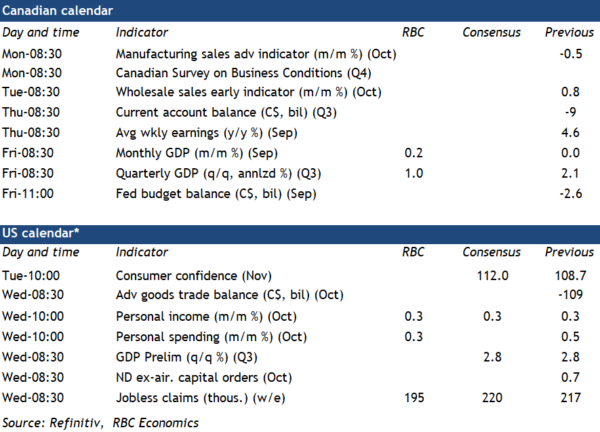We look for gross domestic product growth in Canada to have picked up slightly to 0.2% in September on Friday after holding steady in August. That should leave the Q3 reading in line with our projection for a 1% annualized increase—slightly below the Bank of Canada’s 1.5% forecast and less than half the 2.1% rise in Q2.
Consumer spending likely increased in Q3 given a 5% (annualized rate) rise in retail sales, but a pullback in equipment imports is flagging a drop in business investment after a surprisingly large Q2 increase. A small pick-up in home resales in August and September likely drove residential investment higher in Q3, the first increase in four quarters.
The 0.2% increase we expect in September GDP is lower than Statistics Canada’s 0.3% advance estimate, with the rise partly due to the rail transportation bounce-back after disruptions in August. Wholesale and retail sale volumes rose in September, but manufacturing output likely contracted again, while hours worked fell 0.4% in September.
More importantly, the increase in Q3 GDP won’t prevent another contraction in real per-person activity, extending that downward trend for a sixth consecutive quarter. The soft growth backdrop and broadly easing inflation pressures are the main reasons our own base-case projections look for another 50 basis point rate cut from the Bank of Canada in December.
September’s GDP report will also include annual benchmark revisions with early estimates already suggesting that the level of GDP in 2023 was 1.3% higher than previously estimated. However, that is unlikely to change the broader trajectory for per-capita output, which has been persistently lower and consistent with a rising unemployment rate and slowing inflation pressures.
Week ahead data watch
We expect U.S. personal spending to grow by 0.3% in October, down from the 0.5% in the prior month. Retail sales came in at 0.4% during that month, also grew at a slower pace than in September.
U.S. Personal income likely rose 0.3% in October. Disruptions from hurricanes and a large strike in the manufacturing sector paused job growth in October (+12k), but wages rose.
Job openings in the Canadian September SEPH data will be watched closely for signs of further softening in the labour market. Job openings have been declining, and we continue to expect wage growth to slow.















